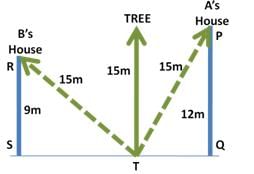Olympiad Test: Fractions and Decimals - Class 7 MCQ
20 Questions MCQ Test Mathematics (Maths) Class 7 - Olympiad Test: Fractions and Decimals
A __________ is a fraction that represents a part of a whole.
Three times the first of three consecutive odd integers is 3 more than twice the third. The third integer is:
The product of two numbers is 2.0016. If one of them is 0.72, find the other number.
The price of commodity X increases by 40 paise every year, while the price of commodity Y increases by 15 paise every year. If in 2001, the price of commodity X was Rs. 4.20 and that of Y was Rs. 6.30, in which year commodity X will cost 40 paise more than the commodity Y ?
The product of two proper fractions is ________ each of the fractions that are multiplied.
In a class of 40 students 1/5 of the total number of students like to study English, 2/5 of the total number like to study mathematics and the remaining students like to study Science.
Q. How many students like to study English?
There is a tree between houses of A and B. If the tree leans on A’s House, the tree top rests on his window which is 12 m from ground. If the tree leans on B’s House, the tree top rests on his window which is 9 m from ground. If the height of the tree is 15 m, what is distance between A’s and B’s house?
In a proper fraction, the numerator is ________ the denominator.
In a class 3/4th of the students do not know either English or Hindi. But 1/6th of the students know English. How much students know both English and Hindi if students who know Hindi are 1/8th of total students in the class?
|
76 videos|347 docs|39 tests
|
























